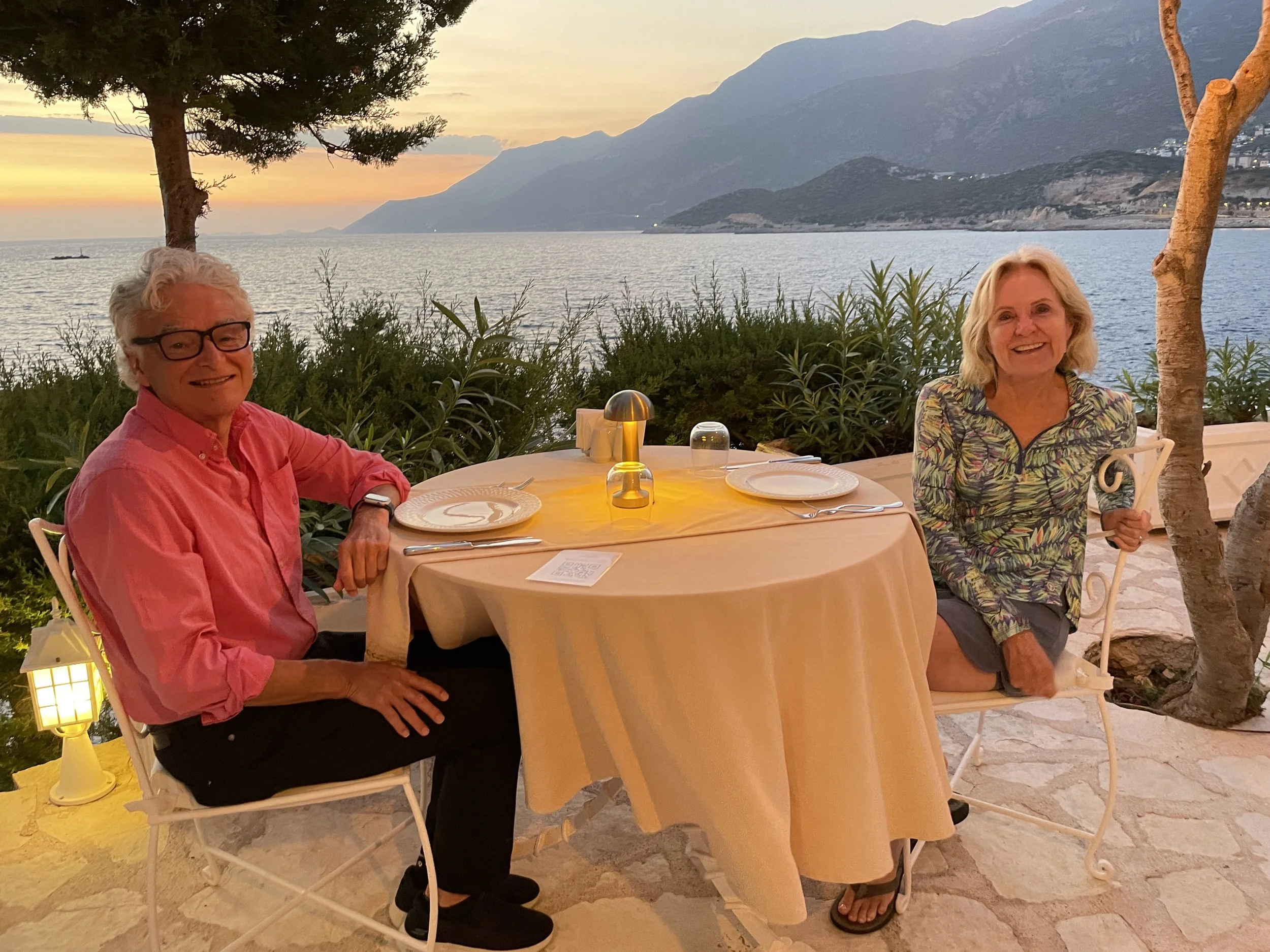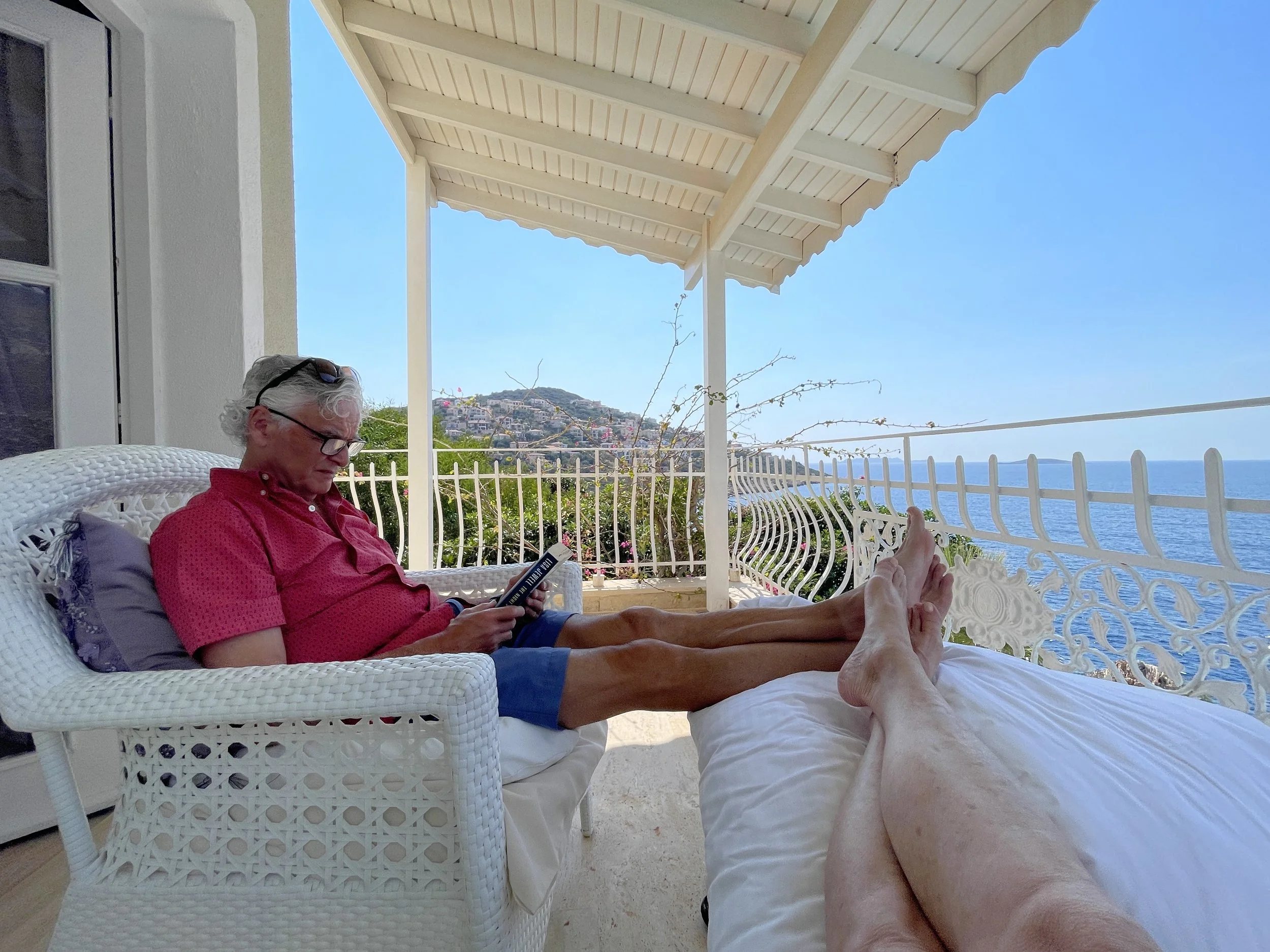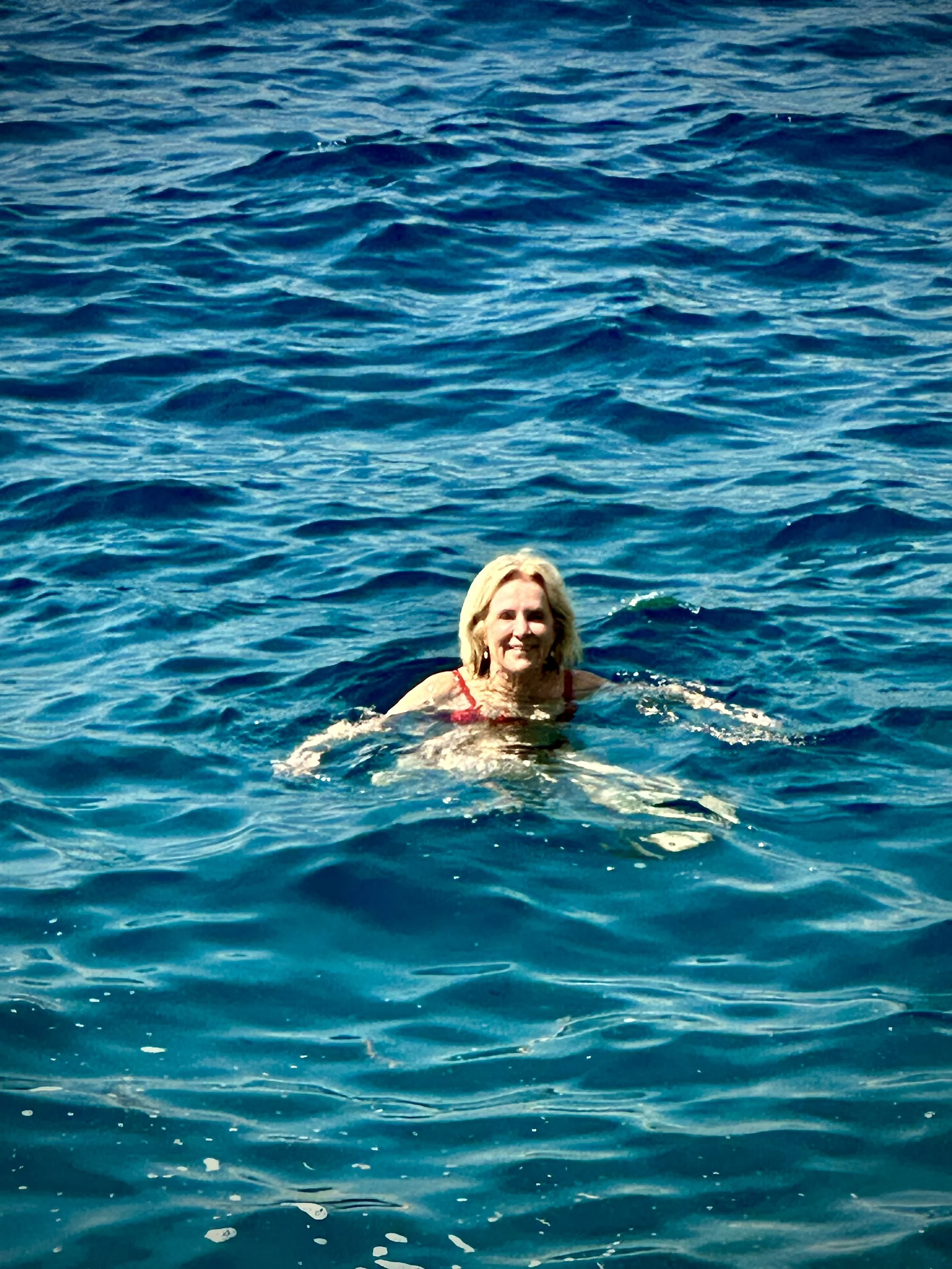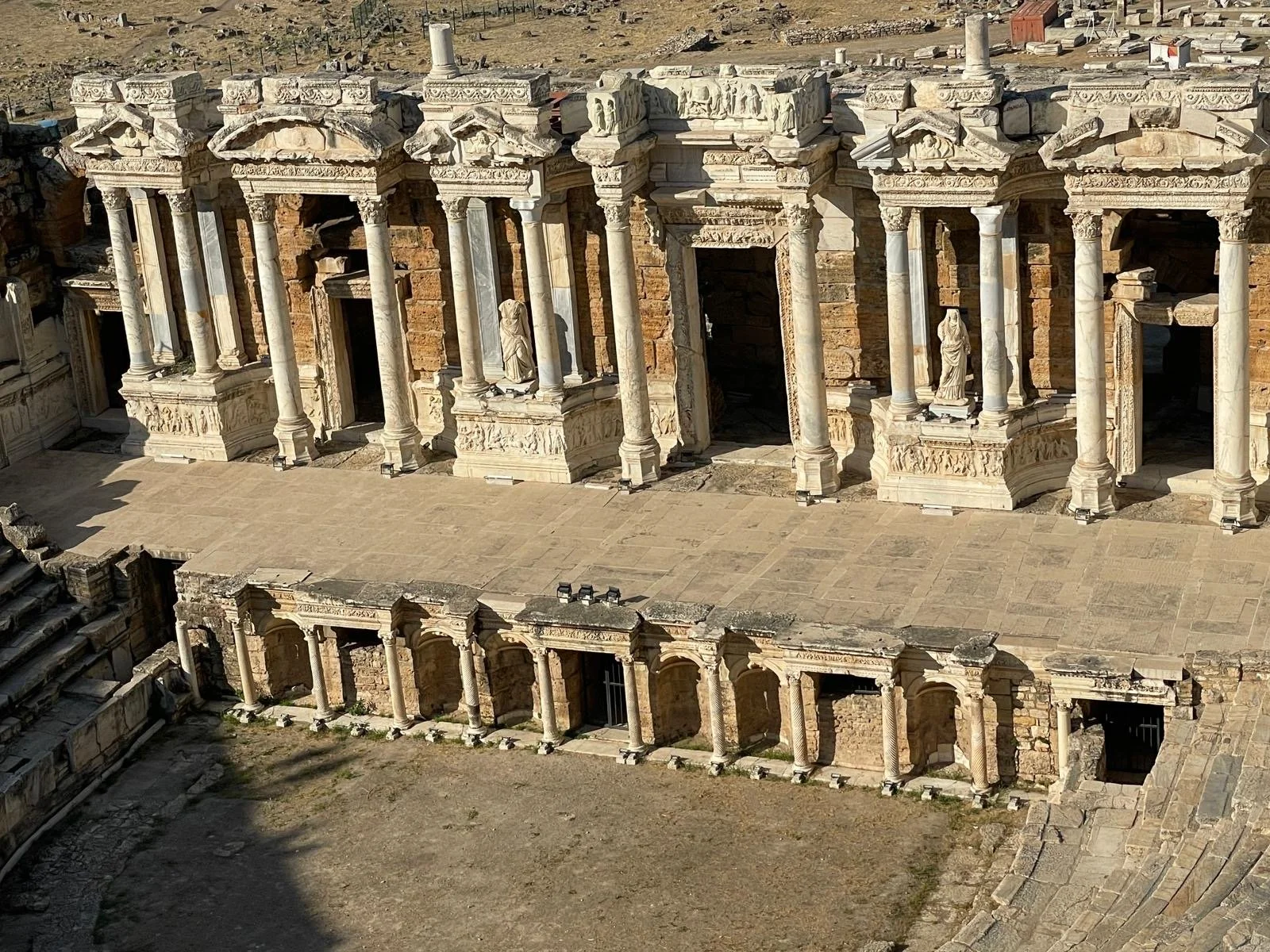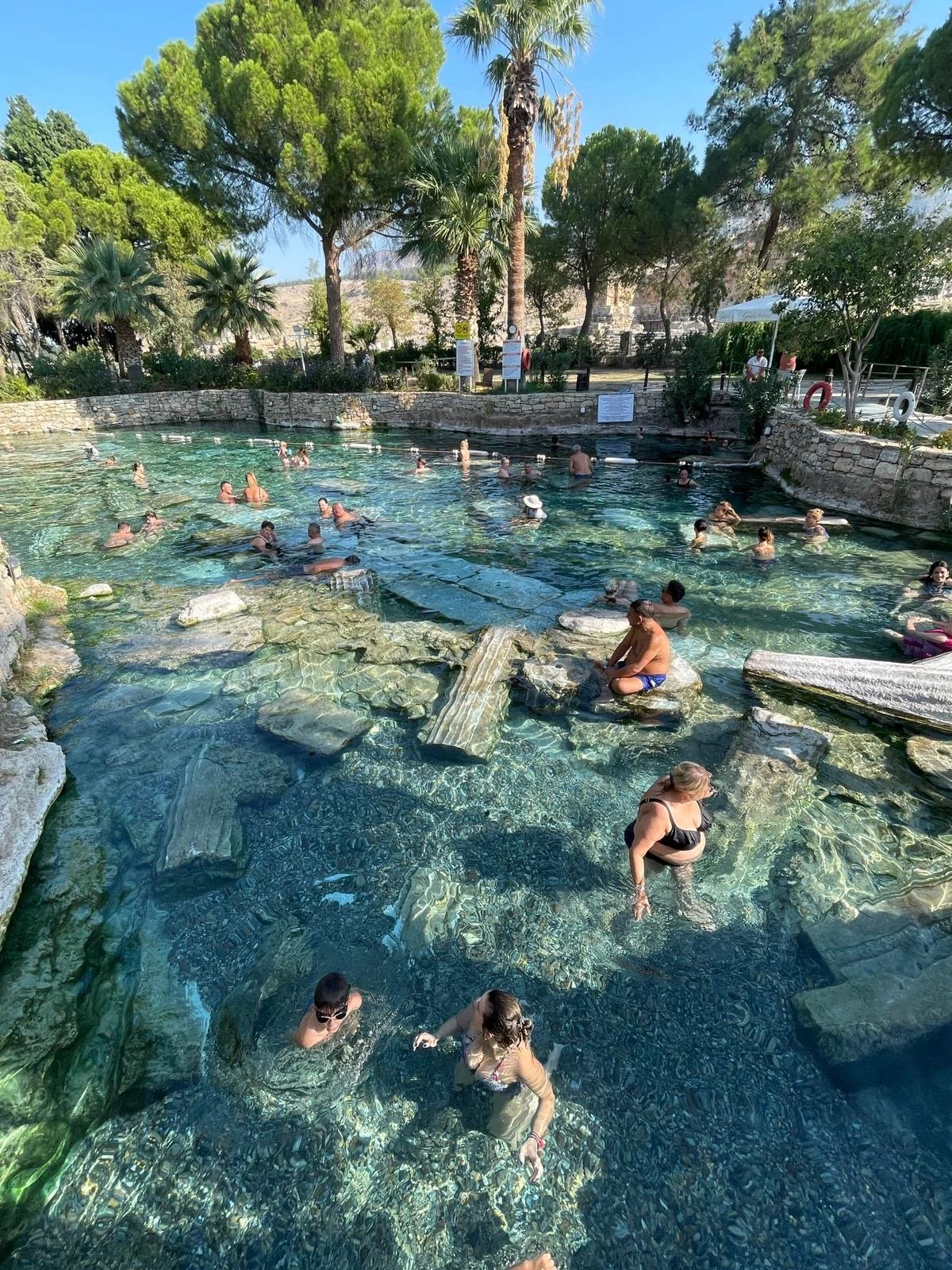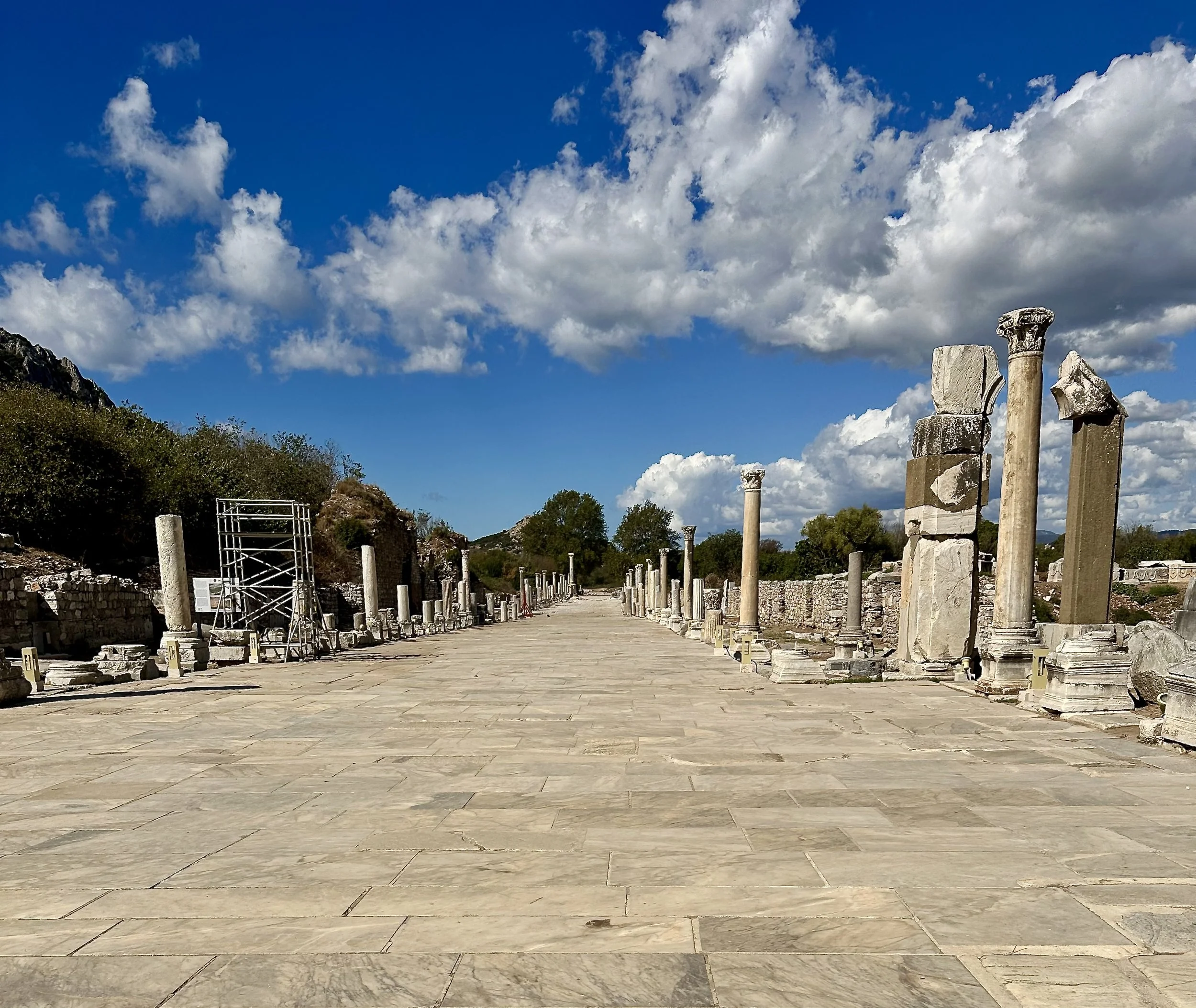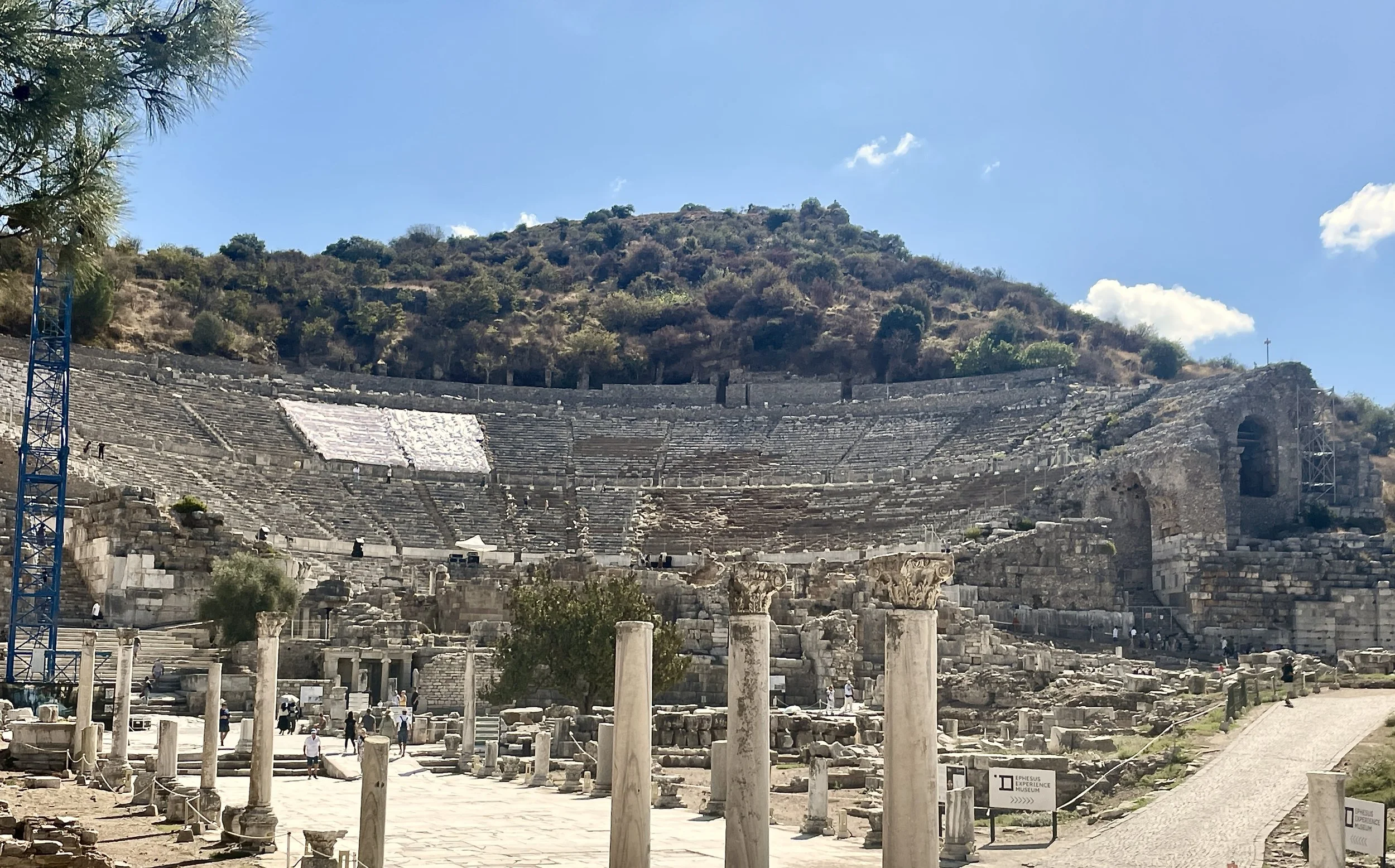Turkish Delights (Part 3)
After an earlier jam-packed itinerary, we were eager for some serious R&R. Kas, a mellow resort town on southwest Turkey’s staggeringly picturesque Turquoise Coast, provided the perfect venue. We stayed at the end of a six-kilometer peninsula west of town in a hotel perched above the broken coastline. Undeterred by the rocky access and wobbly ladder, we swam every day in the jade waters of the Med. It’s called the Turkish Riviera for good reason!
We interrupted our blissfully lazy schedule only once--with a guilt-motivated trip into Old Town Kas, a charming cluster of cobbled pedestrian streets. With its whitewashed houses dripping with bougainvillea, this former fishing village/ex-hippy hangout reminded me of the Greek islands. The town itself was built around the relics of an ancient Lycian settlement, and the acclaimed Lycian Way, known for its scenic landscapes, ruins, and coastal beauty, passes it by.
Our next destination, Fethiye, was a two-hour drive northeast of Kas. Have you seen those enticing posters of Turkey in your travel agent’s office? You know…the hopelessly serene ones, picturing a sun-kissed sailboat moored in an idyllic cove with a backdrop of sapphire skies. Chances are, those photos were taken around Fethiye. The town’s massive marina was crammed—port to starboard—with vessels. We walked the pedestrian promenade where boats ranging from dilapidated trawlers to luxury super-yachts were docked and we got lost in the tangled streets of Old Town’s bazaar, where we grossly overpaid for a teeny bag of dried strawberries. Note to self: ask price. Always!
Our most memorable dining experience occurred in an unlikely place--Fethiye’s Fish Market. From a circle of covered market stalls, crazed fishmongers touted their catches, and for a fixed fee, restaurants surrounding the stalls cooked it. There was little to distinguish which fishmonger or restaurant to choose—all competed for our attention. We picked randomly, and after we’d paid by the kilo, the fishmonger handed our fish over to the restauranteur. Before finishing our first glass of wine, we were dining on fresh sea bass grilled in olive oil with a garlic/lemon sauce. It wasn’t dining fine, but the food made up for the frenetic ambiance.
Fethiye was the base for our adventure on a gület (pronounced goo-let). What’s a gület, you ask? It’s Turkey’s traditional wooden, broad-beamed sailing vessel. Our 25-metre boat, the Ros, had a mast, but the only time we hoisted a sail, we were becalmed. That was okay! It gave us more time to drink in the untouched beauty of the Göcek Islands, a stunning archipelago accessible only by sea.
For four heavenly days and three nights, we motored the azure waters of this protected maritime paradise with three lovely Aussie couples and two (not quite so lovely) New Yorkers. By day, we swam, snorkeled, and blissfully languished in the sun on Roz’s spacious deck; at night, we escaped our claustrophobic cabin to sleep under a canopy of stars.
With no fixed itinerary, Captain Ahmed chased the calmest seas and the least crowded bays. A typical day began with a swim and a delicious Turkish breakfast prepared by Sunny, our sweet chef and second mate. Then, we’d depart to yet another picture-perfect destination, where we’d hike into the craggy hills to discover the ruins of a hidden temple or climb to a vantage point for never-ending views of a pine-blanketed peninsula stretching into the pristine bay below us.
Untouched ruins riddle the Göcek Islands. Some we could even see submerged below us while swimming. Cleopatra’s Bath, tumbling into the emerald waters of Hammam Bay, was the most impressive. Legend has it that Marc Anthony built the bath as a wedding gift for his beloved wife, although there’s no evidence the ancient queen bathed there.
Afternoons were filled with more swimming and deck time as we cruised to our offshore moorage for the night. Evenings ended with spectacular sunsets, fine Turkish wine, and a delectable dinner. The food was fresh and top shelf! It astounded me how Chef Sunny could produce such a variety of local delicacies in Roz’s tiny galley. I still dream about his crispy calamari.
Docking back in Fethiye post-cruise, we felt recharged and ready to savor the last of the Turkish delights on our itinerary.
Pamuk, in Turkish, means “cotton castle,” which perfectly describes the cloudy mountainside above Pamukkale. According to legend, the blinding white terraces were formed by giants who left their cotton harvest out to dry, and it solidified into stone. The scientific explanation is more mundane. The gleaming bluffs resulted from thousands of years of deposits left by warm, mineral-rich springs trickling down the mountain. The uniquely photogenic thermal pools were believed to have healing properties and promote relaxation. With crowds of day-trippers creating a theme park vibe, I found them anything but Zen!
To protect the calcite, everyone was required to remove their shoes to wade in the shallow thermal waters pooled in the terraces. The rough, gritty surface wasn’t sharp enough to cut—but ouch, my soles are sensitive. Walking (more like toddling) ravaged my feet, and the risk of slipping was real. We saw one guy go down, submerging his backpack and cell phone.
Nearby Hierapolis, a once prosperous curative center and now a UNESCO site, was plagued with earthquakes until one finally destroyed the city, causing its inhabitants to flee. The ruins were worth a visit, primarily for the atmospheric Sacred Pool, also known as Cleopatra’s Bath—that gal got around! This series of connected ponds contain the remnants of a quake-toppled temple! Marble columns, plinths, and carvings litter the bottom and provide perfect loungers for relaxing in the pool’s warm, soothing geothermal waters.
We saved the best ruins for last—Ephesus, our final Turkish destination. In the ancient world, this vibrant capital of Roman Asia Minor was home to over 250,000 inhabitants and a center of trade, science, religion, and Christianity. Its founder is a matter of speculation. I prefer the Greek legend that claims a tribe of mysterious Amazons first established the city. Today, Ephesus is considered Europe’s best-preserved ancient city. It is colossal (estimated at 48 square miles)! Even more brain-boggling, archaeologists have only unearthed 20% of the city to date.
We entered through the Lower Gate. Meandering its marble streets where historical notables like Alexander the Great, Cicero, Cleopatra, Marc Antony, John the Apostle, and St. Paul once walked, that ancient world came alive for us. We sauntered past terraced housing, churches, gymnasiums, squares with sumptuous fountains, and countless baths. I lost track of how many temples we saw. We admired the city’s sophisticated water/drainage system and vast agora (for public assemblies and trade) and enjoyed views from the top of the Great Theatre, which seated 25,000 people and is still used for events.
The parts of Ephesus that piqued my curiosity formed an odd juxtaposition. I loved the magnificence of the Library of Celsus (2nd century AD), which became a center of learning and knowledge within the Roman Empire. But my other two faves—the brothel and latrines, admittedly less high-brow—were equally as intriguing.
The Ephesus brothel, an innocuous two-story structure, was once connected by a secret underground passageway to the Library across the street. Our guide speculated that ancient scholars needed a break from reading scrolls. My take, Roman men used the Library as a cover to sneak away to find love instead of literature: “Hey, sweetie…I’m off to the Library. Be home in a while!” Historians figure a sign carved into the marble street depicting (in part) an adult-sized foot pointing toward the brothel, the bust of a woman, and a money purse is the world’s oldest advertisement. It’s somehow fitting the pictograph promoted the world’s oldest profession.
The latrine consisted of marble benches with holes cut into the stone. It sat forty-eight people and water continuously flowing in a rock gutter beneath the seats flushed waste out of the city. I was struck by how disturbingly close the holes were. The buttocks of 1st-century Romans must have been slenderer, or people were less inhibited back then. I imagined a line of toga-clad men sitting, butt cheek-to-butt cheek, exchanging gossip and discussing business, politics, and local news while taking a communal constitutional. The high-rolling wealthy even paid a membership fee to claim a specific seat and sent their slaves in advance to warm or cool (seasonally dependent) the marble.
I think I’ll call it a wrap with the toilet tales. Let me just say that the name Turquoise Coast sounds like the ultimate tourist cliché, but Turkey’s southwestern coastline is just that—a dazzling blend of sea and sky in a vibrant turquoise palette. It’s stunning!
I hope you’ve enjoyed this series of three posts on Türkiye—it will always Turkey to me. If you missed one, check my website at https://www.lauragosset.com/travelblog. Despite terrorist attacks and unrest with neighboring Syria, we found Turkey a safe destination. Our adventures there were a delicious blend: rich culture, epic history, captivating ruins, and exotic countryside. Combine all that with its delectable food, good wine, and self-indulgent pleasures like frolicking in the warm Mediterranean, and the result is a winning vacay! So, my friends, when you’re haunted by thoughts of a sun-drenched elsewhere, I can’t say it enough…consider Turkey!

